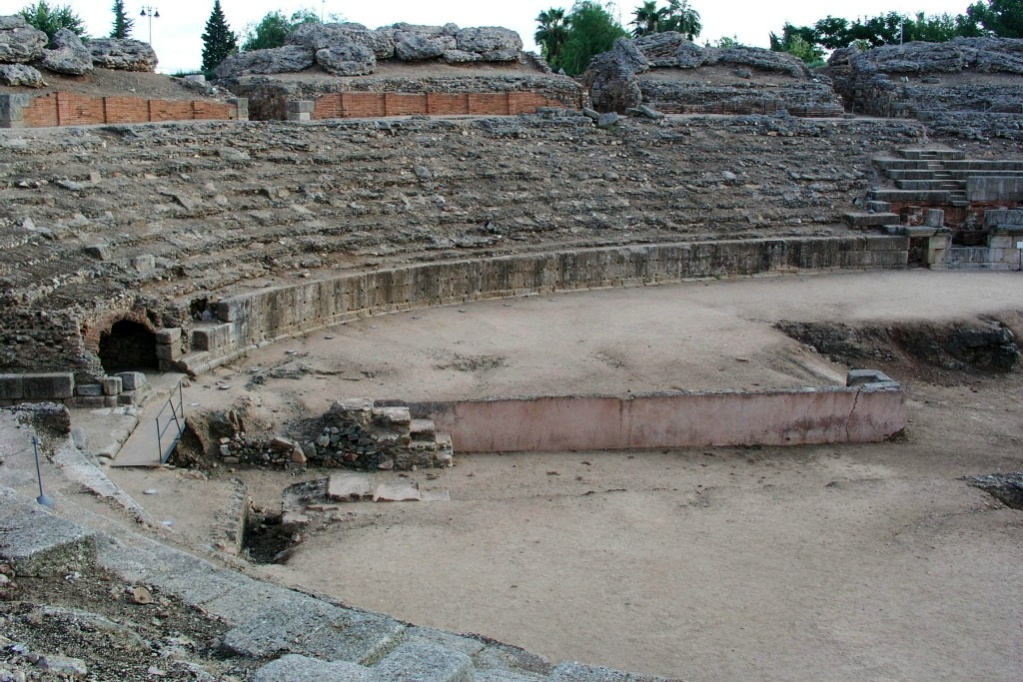SPAIN
TRAVEL GUIDE
Ultimate Spain Travel Guide: Insider Tips for a Memorable Adventure Across Vibrant Cities, Stunning Beaches, and Rich Cultural Sites! Explore the Best of Spain from Bustling Barcelona to Historic Andalusia. Your Go-To Resource for an Unforgettable Spanish Journey
The Best Places To Visit In Spain
The Best Cities To Visit In Spain
Discover the Heart of Spain
Embark on a journey through Spain, a land of fiery passion, ancient history, and breathtaking diversity. From the sun-drenched beaches of Málaga to the architectural wonders of Barcelona, this guide introduces you to Spain’s vibrant tapestry of cultures, cuisines, and landscapes. Prepare to be enchanted by flamenco rhythms, savor tapas in lively plazas, and explore a country where every corner tells a story.
Need to Know
Why Travel to Spain
Tip: Spain offers historic cities, vibrant festivals, and diverse landscapes.
Why: From Madrid’s royal palaces to Andalusia’s Moorish heritage, Spain blends rich history, Mediterranean charm, and world-class cuisine.
How: Explore museums and landmarks (€5–20), enjoy local cuisine (€5–15), and book tours via Viator (€20–50) for guided experiences.
Do I Need a Visa
Tip: EU, US, and many nationalities get 90-day visa-free entry (Schengen). Others may need a visa (€60–80). Check requirements in advance.
Why: Ensures smooth entry and compliance with Schengen immigration rules.
How: Check via Spanish embassy websites (€0). Carry digital passport copies on Google Drive (€0). Have proof of accommodation ready.
What is the Currency of Spain
Tip: The currency is Euro (€). Budget travelers spend €50–100/day ($50–100).
Why: Euros are used for most transactions; cards are widely accepted in cities and tourist areas.
How: Exchange at banks (€0) or use ATMs (€1–3 fee). Carry small Euro notes (€5–20). Use Revolut (€0 fees) for better rates.
Is Spain Cheap to Visit
Tip: Spain is affordable, with meals (€5–15), hostels (€20–50/night), and transport (€2–15) at moderate costs, especially outside Madrid and Barcelona.
Why: Budget-friendly options in smaller cities and regions suit cost-conscious travelers.
How: Stay in hostels (€20–50). Eat at local bares (€5–10). Book via Booking.com (€0) for deals.
Can I Drink the Tap Water
Tip: Tap water is safe across Spain, but bottled water (€0.50–2) is common in restaurants.
Why: High-quality tap water ensures safety, but cultural norms favor bottled water in dining settings.
How: Carry a reusable bottle (€5–15) for tap water. Buy bottled water from shops (€0.50–2) if preferred. Check seals on bottles.
Can I Buy a SIM Card
Tip: Purchase a local SIM card for data and calls (€10–25).
Why: Affordable data plans ensure connectivity for navigation and communication.
How: Buy SIMs at airports or shops (€10–25). Top up via mobile apps (€0). Choose providers like Movistar or Vodafone.
Enchanting Spain Travel Guide: Your Gateway to Unforgettable Adventures
Welcome to the Enchanting Spain Travel Guide, your essential companion for exploring a European gem. Spain captivates with its historic cities, vibrant festivals, and stunning coastlines, from Madrid’s cultural riches to Seville’s flamenco rhythms. This guide covers eight top destinations, cultural experiences, and practical tips to ensure a seamless and unforgettable journey. Whether you’re wandering Barcelona’s Gothic Quarter or savoring paella in Valencia, let this guide inspire your Spanish adventure.
How to Get to Spain
Travel Options
Tip: Fly into Madrid (MAD) or Barcelona (BCN) (€600–1500 from North America, €50–200 from Europe). Trains connect from France or Portugal (€20–60).
Why: Madrid and Barcelona are main gateways with excellent rail connections to Europe.
How: Compare flights on Skyscanner (€0). Take trains from Paris (€40–80) or Lisbon (€20–50). Use trains (€5–30) or buses (€5–20) within Spain.
Best Time to Visit Spain
Optimal Seasons
Tip: Visit in spring (March–May) or autumn (September–November) for mild weather (15–25°C). Summer (June–August) is hot (25–35°C), ideal for beaches. Winter (December–February) suits city exploration (5–15°C).
Why: Spring and autumn offer pleasant weather and fewer crowds; summer is best for coastal areas.
How: Book accommodations early for summer (€30–150/night). Pack light clothing and sunscreen. Check forecasts via AEMET.es (€0).
Top Destinations in Spain
Madrid
Tip: Visit the Prado Museum (€15), explore Plaza Mayor (€0), and stroll Retiro Park (€0). Try cocido madrileño (€8–15) or join a city tour (€20–40).
Why: Madrid, Spain’s vibrant capital, blends royal grandeur with lively culture. The Prado’s art collection and Plaza Mayor’s bustling atmosphere offer a perfect mix of history and modern energy.
How: Use Madrid’s metro or buses (€1.50–2). Book museum tickets online (€0 fees) or tours via Viator (€20–40). Wear comfortable shoes for walking and visit in spring for blooming parks.
Barcelona
Tip: Visit Sagrada Família (€20–26), explore Gothic Quarter (€0), and stroll La Rambla (€0). Try paella (€10–20) or join a Gaudí tour (€20–40).
Why: Barcelona, a Mediterranean gem, is famed for Gaudí’s architecture and vibrant streets. The Sagrada Família and Gothic Quarter’s medieval charm create a unique blend of art and history.
How: Take trains from Madrid (€40–80, 2.5 hours). Stay in guesthouses (€30–80/night). Book tours via GetYourGuide (€20–40), try tapas (€5–10), and visit in autumn for fewer crowds.
Seville
Tip: Visit the Alcázar (€13.50), explore Seville Cathedral (€10), and stroll Plaza de España (€0). Try gazpacho (€5–8) or join a flamenco show (€15–30).
Why: Seville, Andalusia’s heart, boasts Moorish architecture and passionate flamenco. The Alcázar’s intricate tiles and the cathedral’s Giralda tower offer a glimpse into Spain’s rich history.
How: Take trains from Madrid (€30–60, 2.5 hours). Stay in hotels (€30–80/night). Book tours via Klook (€15–30), wear sunscreen for sunny plazas, and visit in spring for Feria de Abril.
Granada
Tip: Visit the Alhambra (€14–18), explore Albaicín (€0), and see Sacromonte (€0). Try tapas (€2–5) or join a guided tour (€20–40).
Why: Granada, a UNESCO-listed city, is famed for the Alhambra’s Moorish splendor. The Albaicín’s narrow streets and Sacromonte’s flamenco caves offer a vibrant mix of culture and history.
How: Take buses from Seville (€10–20, 3 hours). Stay in guesthouses (€20–60/night). Book tours via Viator (€20–40), try sangría (€3–6), and visit in spring for mild weather.
Valencia
Tip: Visit the City of Arts and Sciences (€8–40), explore the Central Market (€0), and relax at Malvarrosa Beach (€0). Try paella valenciana (€10–15) or join a bike tour (€15–30).
Why: Valencia blends futuristic architecture with Mediterranean charm. The City of Arts and Sciences and historic Central Market offer a mix of innovation and culinary tradition.
How: Take trains from Barcelona (€20–40, 3 hours). Stay in hotels (€30–80/night). Book tours via GetYourGuide (€15–30), pack sunscreen for beach days, and visit in March for Las Fallas.
Bilbao
Tip: Visit the Guggenheim Museum (€10–16), explore Casco Viejo (€0), and stroll the Nervión River (€0). Try pintxos (€2–5) or join a Basque tour (€15–30).
Why: Bilbao, a Basque cultural hub, is famed for its modern Guggenheim and historic Casco Viejo. The city’s pintxos bars and riverfront add a vibrant, culinary charm.
How: Take buses from Madrid (€20–40, 5 hours). Stay in guesthouses (€20–60/night). Book tours via Klook (€15–30), try Basque cider (€3–6), and visit in autumn for cultural events.
Málaga
Tip: Visit the Picasso Museum (€9), explore Alcazaba (€3.50), and relax at La Malagueta Beach (€0). Try espeto sardines (€5–8) or join a coastal tour (€15–30).
Why: Málaga, a Costa del Sol gem, blends Picasso’s legacy with Andalusian history. The Alcazaba’s Moorish fortress and sunny beaches offer a perfect mix of culture and relaxation.
How: Take trains from Seville (€20–40, 2 hours). Stay in hotels (€30–80/night). Book tours via Viator (€15–30), pack sunscreen for beach days, and visit in summer for coastal vibes.
Toledo
Tip: Visit Toledo Cathedral (€10), explore Alcázar (€5), and stroll the Jewish Quarter (€0). Try marzipan (€2–5) or join a medieval tour (€15–30).
Why: Toledo, a UNESCO-listed city, is a melting pot of Christian, Muslim, and Jewish heritage. The cathedral’s Gothic splendor and the Alcázar’s history offer a journey through Spain’s past.
How: Take trains from Madrid (€10–15, 30 minutes). Stay in guesthouses (€20–60/night). Book tours via GetYourGuide (€15–30), wear comfortable shoes for cobblestones, and visit in spring for mild weather.
Cultural Experiences and Tips
Spanish Cuisine
Tip: Try paella (€10–15), tapas (€2–5), or churros (€3–6) at local bares. Sip sangría (€3–6).
Why: Spain’s cuisine blends Mediterranean and regional flavors with fresh seafood and hearty dishes.
How: Dine at Seville’s Triana bares or Barcelona’s La Boqueria. Book cooking classes via Viator (€20–50). Pair with Rioja wine (€3–8).
Cultural Festivals and Crafts
Tip: Attend Seville’s Feria de Abril (April, €0–20) or visit ceramic workshops in Granada (€10–20).
Why: Festivals and crafts showcase Spain’s vibrant regional traditions.
How: Check schedules on Spain.info (€0). Book cultural tours via GetYourGuide (€15–40). Bargain respectfully at markets.
Music and Dance
Tip: Enjoy flamenco in Seville (€15–30) or Basque music in Bilbao (€0–10).
Why: Spain’s music and dance reflect its passionate and diverse heritage.
How: Book tickets via Ticketmaster.es (€0). Visit venues like Seville’s Casa de la Memoria. Dress smartly for flamenco shows.
Practical Tips for Traveling in Spain
Visa and Documentation
Tip: Ensure your passport is valid for 6 months. Many nationalities get 90-day visa-free entry (Schengen); others need a visa (€60–80).
Why: Simplifies entry and ensures compliance with Schengen rules.
How: Check via Spanish embassy websites (€0). Carry digital copies on Google Drive (€0). Have proof of accommodation ready.
Currency and Payments
Tip: Use Euros (€50–100/day). Cards are widely accepted; cash is useful for small vendors and rural areas.
Why: Small bares and markets often prefer cash payments.
How: Use ATMs in Madrid (€1–3 fee). Carry small Euro notes (€5–20). Use Revolut (€0 fees) for better rates.
Language and Communication
Tip: Learn phrases like “hola” (hello) or “gracias” (thank you). English is common in tourist areas but limited elsewhere.
Why: Basic Spanish enhances interactions and shows respect.
How: Use Google Translate (€0) for offline use. Purchase a local SIM card (€10–25) for data.
Safety and Dangers in Spain
Tip: Spain is safe, but beware of pickpocketing in Barcelona’s La Rambla or Madrid’s metro. Be cautious on coastal trails.
Why: Low crime rates, but tourist areas and trails require vigilance.
How: Use a money belt (€10–20). Check travel advisories (US State Department, €0). Stay hydrated on hikes (€0.50–2).
More Safety Tips for EuropeAccommodation Options
Tip: Choose hotels in Madrid (€50–150/night), hostels in Barcelona (€20–50/night), or guesthouses in Málaga (€30–80/night).
Why: Diverse options suit budgets, from urban hotels to coastal guesthouses.
How: Book via Booking.com or Airbnb (€0). Opt for central or seaside locations. Check reviews for authenticity.
Transportation
Tip: Use trains (€5–30), buses (€5–20), or rent cars (€30–60/day). Walking is viable in city centers.
Why: Efficient transport options suit both urban and rural exploration.
How: Book trains via Renfe.com (€0). Use ALSA for buses (€0) or rent cars via Rentalcars.com (€0). Carry small cash for fares.
Why This Spain Travel Guide is Essential
Your Gateway to Unforgettable Adventures
Tip: Use this guide to explore Spain’s cultural treasures, stay safe, and immerse in local traditions.
Why: Spain’s blend of history, cuisine, and festivals requires informed planning.
How: Follow tips for Madrid, Barcelona, and more. Enjoy tapas (€2–5) and flamenco shows (€15–30). Use apps like Renfe.com (€0) for seamless travel.



